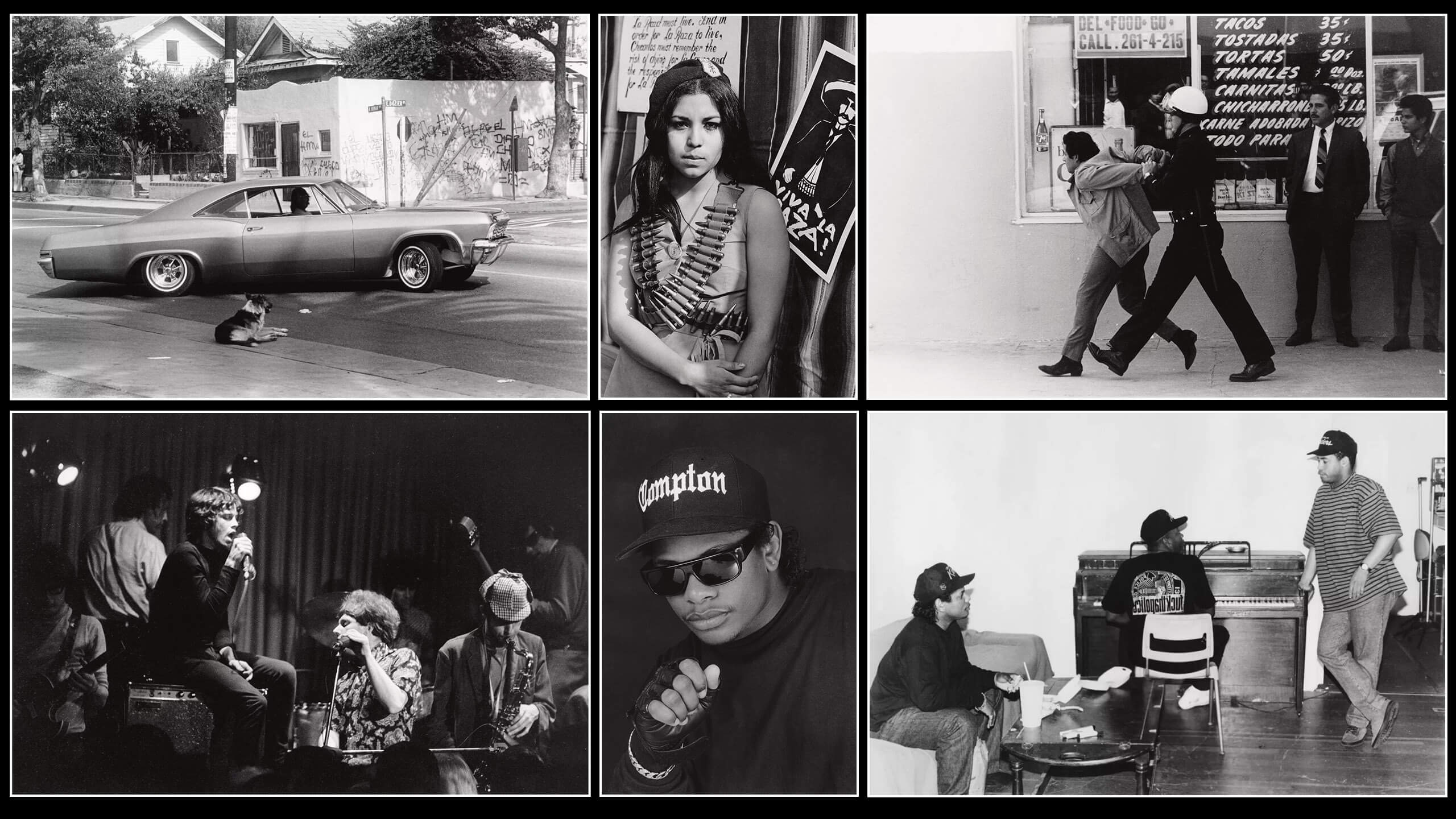“A dog, graffiti and a lowrider — that’s East L.A.” -George Rodriguez
George Rodriguez has made photographs for over 45 years. His subjects appear on record albums and in magazines. Significantly, he enjoyed making photos for himself (opening photo, top row, first image titled “A dog, graffitti and a lowrider”.) He photographed celebrities in real-life situations. Natalie Wood, Lucille Ball and Frank Sinatra all found themselves in front of his camera.
After-school job
George Rodriguez fell in love with photography in 1954 when in high school he needed one more elective class. A friend told him to take photography. “It’s easy,” the friend said. When he got an after-school job at a photo lab, his boss told him he would never make it in photography. “After graduation, I got a job on a steamship as a ship photographer, When I got to Hawaii, I sent my old supervisor a coconut,” Rodriguez recalls.
Columbia Pictures
By the time 1960 rolled around he was managing the photo lab at Columbia Pictures. He was shooting lots of photos on many different subjects. On his lunch hour, he’d drive to East Los Angeles and take photos of the student walkouts. He said, “I was the manager, so I could be a little bit late coming back.”
George Rodriguez wanted to take the picture much more than he wanted to make perfect photos.
He captured Marilyn Monroe and others at Hollywood events. He documented the farmworker movement and East LA.
He shot covers for music magazines including Tiger Beat and Rap Pages. Jim Morrison of the group Them and Van Morrison appear in one image (opening photo, bottom row, first image) taken at Whiskey a Go Go in 1966. He photographed 70s teen personality Shaun Cassidy and 90s rap star Ice Cube and the powerfully popular hip-hop group N.W. A.
N.W.A.
“I sort of knew who N.W.A was when I took this picture (opening photo, bottom row, third image.) It was in Burbank for a magazine called Yo! I’d rented this studio from a professional dancers’ society. It was a converted church, but it had a theater and a dance rehearsal hall and it had this piano — and both Eazy-E and Dr. Dre sat at the piano and played it really well,” George Rodriguez said.
“At the shoot with N.W.A, Eazy (opening photo, bottom row, second image) gave me four cassettes. I still have them. The cassette was ‘Straight Outta Compton.’ I played one on my way home. I could not believe what was on these tapes. I’d never heard hard-core rap. I knew right away this was not going to play on the radio. But what they were talking about, what they were saying about the police — in the 1950s and ’60s in South-Central, the LAPD had carte blanche to do whatever they wanted — that’s what they were rapping about. It was so deep.”
Blowouts 1968
He covered civil unrest. In 1968 high school students in East L.A. walked out of class, later called the walkouts. This boycott ignited the Chicano power movement. George Rodriguez was there with his camera.
“This photo (opening photo, top row, third image) was taken on 4th Street during the walkouts at Roosevelt. There was a lot of stuff going on and I’m always reminded of that lyric from the Buffalo Springfield song: ‘What a field day for the heat’ [from the single ‘For What It’s Worth’]. That’s what it felt like.” George Rodriguez said.
“Kids were getting arrested. They were very young kids — could have been 13, 14, 15 years old. To actually see someone get hit on the head and you can’t do anything about it. I had a lot of respect for the kids. They wanted better schools. It felt a bit hopeless. But I felt tremendous pride for them.”
Happenings?
George Rodriguez body of work is huge. Some of it has been gathered in a book “Double Vision: The Photography of George Rodriguez” published by Hat and Beard Press.
In the book, George Rodriguez said, “Doing the book, I’ve had those ‘Did that really happen?’ moments. I remember I would see Frank Zappa at Barney’s Beanery and we’d have a bowl of beans together. That really happened. But when I think about it, it’s like, ‘Did that really happen?’”
Sources: Los Angeles Times.
Read more stories about inspirational photographers in On Photography.
Source link




Leave a Reply